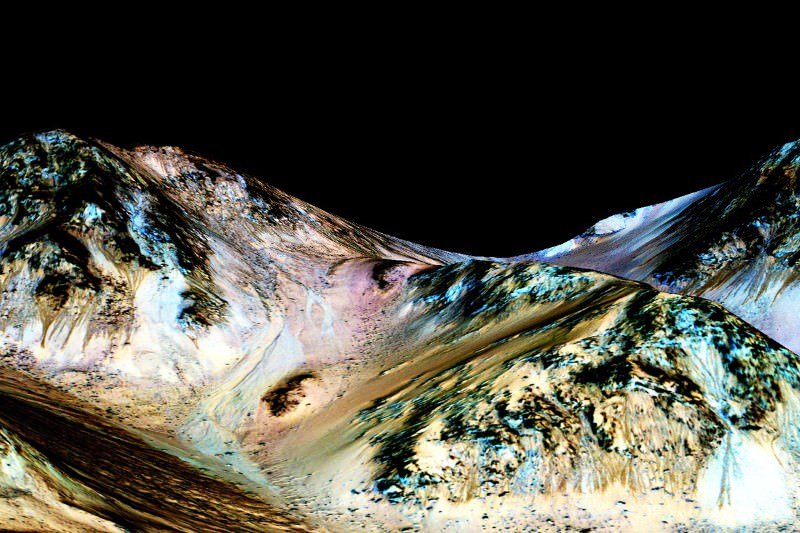Salty water seen flowing on Mars, not far from Curiosity rover

The dark streaks in this picture may be signs of salty water (Image: JPL/NASA)
NASA’s Mars Reconnaissance Orbiter has captured the strongest
evidence yet that salty liquid water flows on the planet’s surface
during warm seasons.
Whether or not these salty flows could sustain life depends on how salty they are, says Lujendra Ojha
of the Georgia Institute of Technology in Atlanta, who has reported the
findings, along with his colleagues. “If the water is completely
saturated with perchlorates [hydrated salts], then life as we know it on
Earth wouldn’t be able to survive in that sort of concentrated water,”
he says. “But if the water only has a tiny percentage of perchlorates in
it, then I think we should be fine.
Recurring slope lineae – dark streaks that appear, get longer, and fade in each Martian year – have long been thought to represent signs of flowing water. Now that idea has been backed up by data from the Orbiter’s onboard spectrometer, named CRISM, which analyses reflected sunlight to detect patterns that indicate what minerals are present on the surface.
Salts can absorb water from the atmosphere and lower the freezing
point of water, making it possible for liquid water to exist even in the
cold Martian climate. Spectral data from four locations with recurrent
slope lineae reveal the presence of hydrated salts, which are most
likely to be magnesium perchlorate, magnesium chlorate and sodium
perchlorate.

